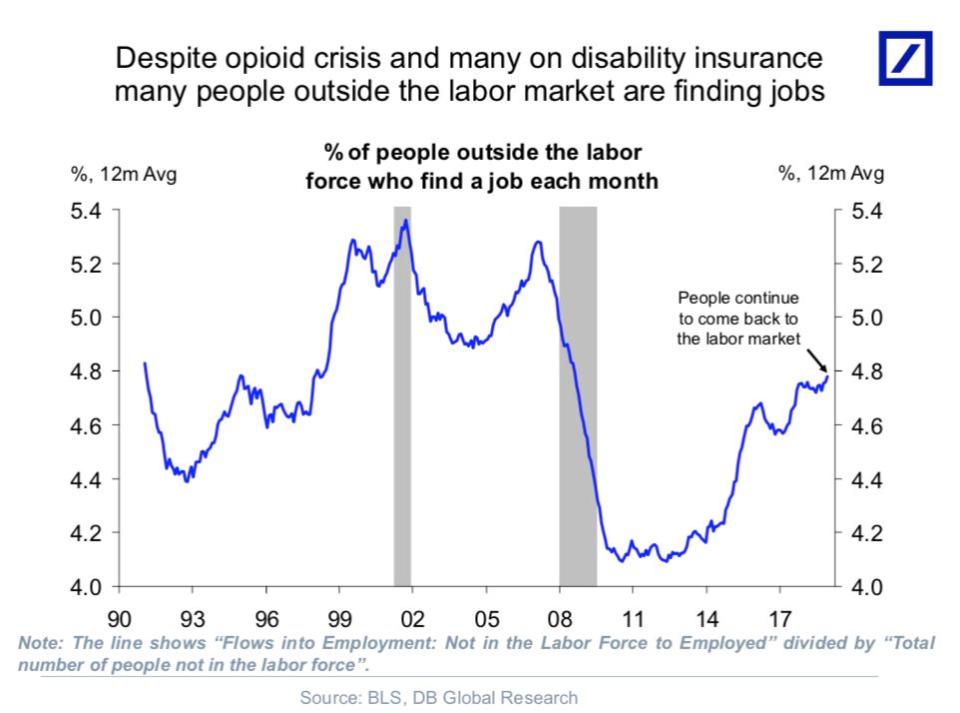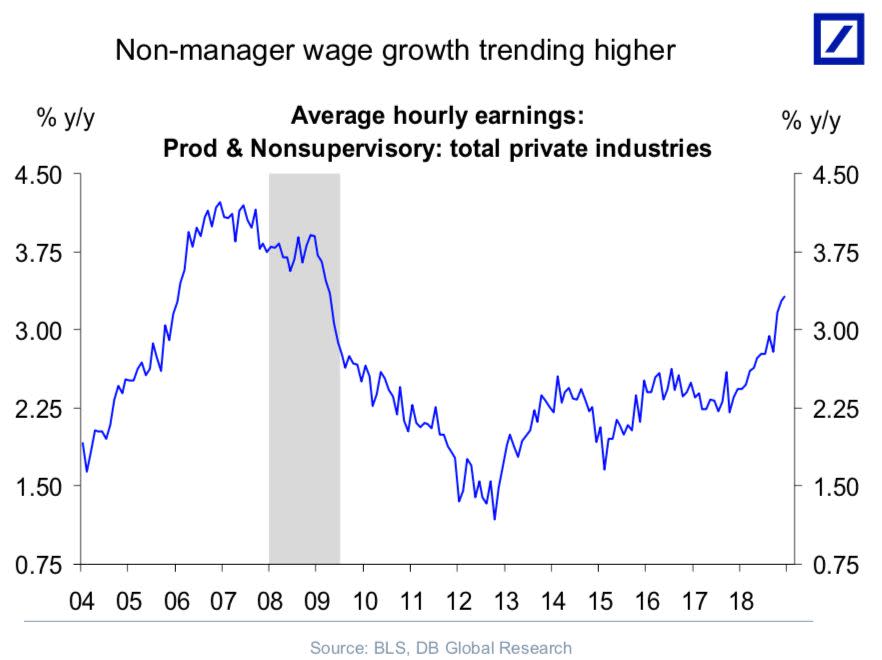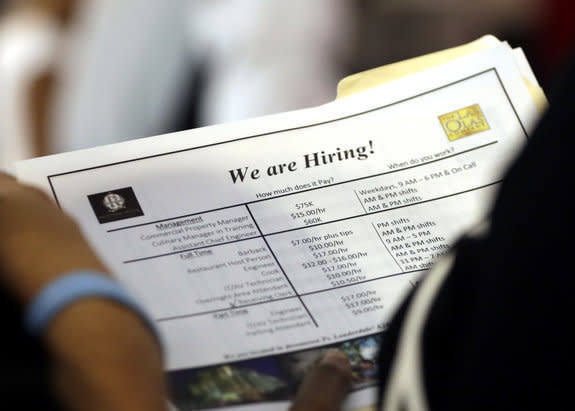Slok: Economists misunderstood the surprising labor market
People who have been outside the labor force for a long time have been bucking conventional wisdom and heading back to work in droves, ignoring naysayers who may view them as “unemployable.”
“The Fed has misunderstood this, we have misunderstood this,” says Torsten Slok, chief international economist at Deutsche Bank. “I would almost argue that any economist out there has actually misunderstood this because we just thought that when people left the labor market they would have lost their skills, they would have lost their qualifications, and therefore they would essentially have become unemployable.”
But that’s far from the case: there is a record number of people continuing to enter the labor market, despite the fact that they’ve been out of it for so long, says Slok, who recently co-authored a report on the labor market.
The Labor Department defines people not being in the labor force as people 16 or older who are neither employed nor unemployed. Non-farm payrolls grew by 312,000 in December, surging past expectations of 184,000. According to the Bureau of Labor Statistics, 4.67 million people who were not in the labor force in November 2018 got a job last month.

Since the last recession that began in 2008, a record 4.8% of people outside the labor force found a job last month, compared to 4.1% in 2011. This was the most striking finding from Deutsche Bank’s recently released data on the U.S. labor market.
“If there’s one hidden aspect, one hidden data point in the employment report that I think is underappreciated by market and by people out there, it is the fact that we still continue to see more and more people come back, even at this late point of the cycle,” he said.
The increase in the number of people looking for work even caused the unemployment rate to climb to 3.9% from 3.7%.
“We have a record high percentage of people outside the labor market who managed to find a job in December” – 4.8%, the highest level since the recession, Slok says. It’s an unusual development, in particular because of recent reports showing that the labor force participation rate has been depressed because of the worsening opioid crisis, which has sidelined many people of prime working age.

The higher participation rate is keeping wage inflation down, a positive for both the Fed and businesses.
“If you have more people who can come and take jobs, that’s holding wage inflation down which of course is good for the Fed, it’s good for profit margins,” says Slok. And if there are more people working, that means more people are paying taxes.
Another positive labor trend: Deutsche Bank data shows non-managers are beginning to see higher wage growth than people with higher skills and a higher education.

“You’re beginning to see much more growth in jobs that are low-wage or medium-wage,” Slok says. “It’s not a coincidence that you have begun to see minimum wages go up for retail, minimum wages go up for warehouses…because now is exactly the time when people who have not been benefiting from this recovery for a long long time” are beginning to see jobs,” he says.

Deutsche Bank analysts view the trade war with China as the issue that will have the biggest impact on whether these positive labor trends will continue in 2019.
Follow Sibile Marcellus on Twitter @SibileTV
More from Sibile:
Domino’s and Chipotle among BTIG analysts’ top picks
Cashiers, bank tellers see fastest wage growth
Amazon grocery shopping fell in 2018: study
Smart devices spark privacy concerns among consumers: study
Netflix, Disney, and other media giants will battle over streaming in 2019

 Yahoo Finance
Yahoo Finance 
